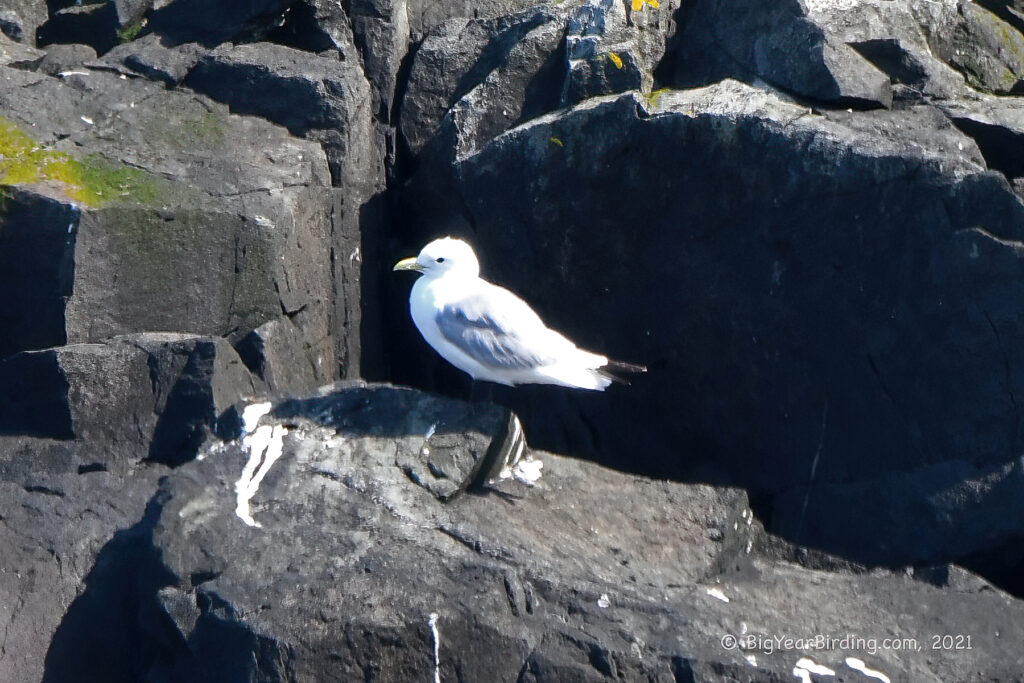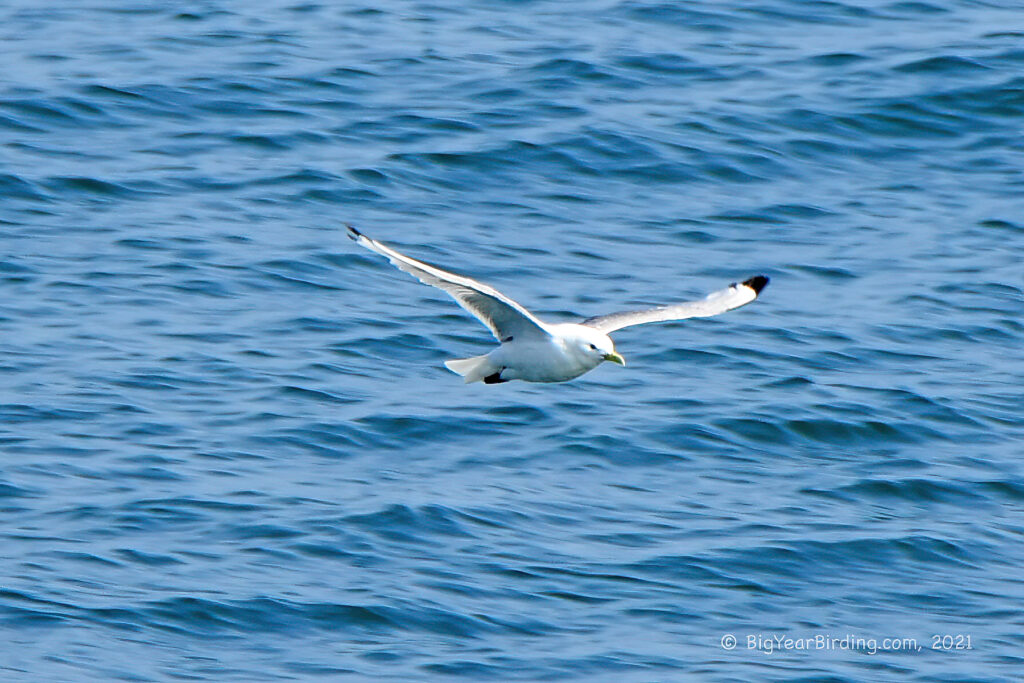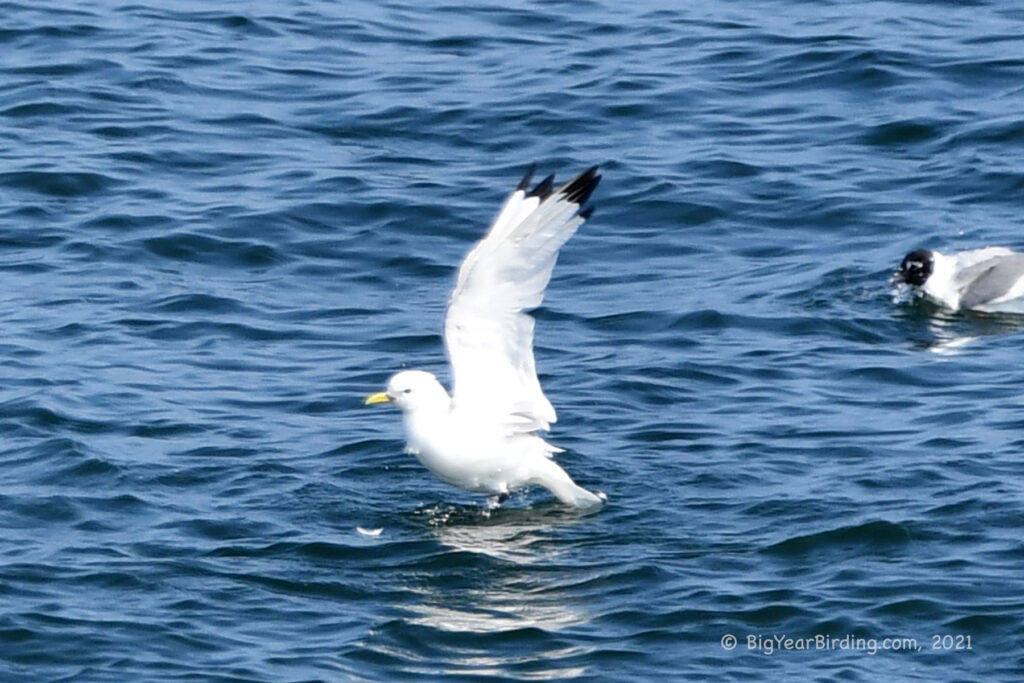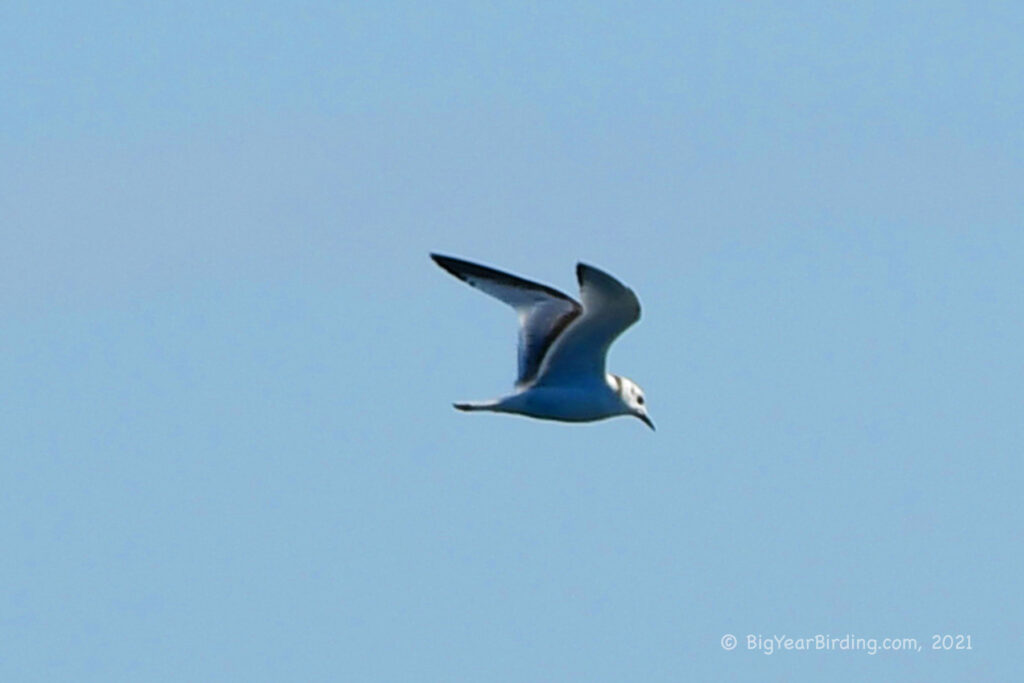
The Black-legged Kittiwake (Rissa tridactyla) is a seabird species that can be found in the northern hemisphere, ranging from the Arctic to the North Atlantic Ocean. These birds are around 16 to 18 inches in length, with a wingspan of approximately 35 inches. They weigh around 9.5 to 12 ounces, with females typically weighing slightly less than males.

One of the distinguishing field marks of the Black-legged Kittiwake is their appearance. They have a white head and underparts, with a pale gray mantle and wings. They have a small, thin, black beak, and their legs are black. During breeding season, their heads develop a smudge of gray behind the eyes. Juveniles have a black “W” pattern on their wings and a black collar around their neck.
Black-legged Kittiwakes are migratory birds, and their migration patterns vary depending on their breeding location. Kittiwakes breeding in the Arctic tend to migrate southward during the winter, while those breeding in more temperate locations may migrate to colder waters during the winter months. Some populations of Black-legged Kittiwakes are non-migratory and can be found year-round in their breeding location.
These birds are primarily pelagic, meaning they spend most of their time at sea, and they are well adapted to life in the ocean. They feed on small fish, plankton, and invertebrates, which they catch by diving into the water. They are also known for their distinctive call, which sounds like “kit-ti-wake, kit-ti-wake.”

In terms of conservation, the Black-legged Kittiwake is classified as a species of “least concern” by the International Union for Conservation of Nature (IUCN). However, some populations have shown declines in recent years, likely due to changes in their prey availability and changes in their ocean habitat. Therefore, continued monitoring and conservation efforts are important for the long-term survival of this species.

